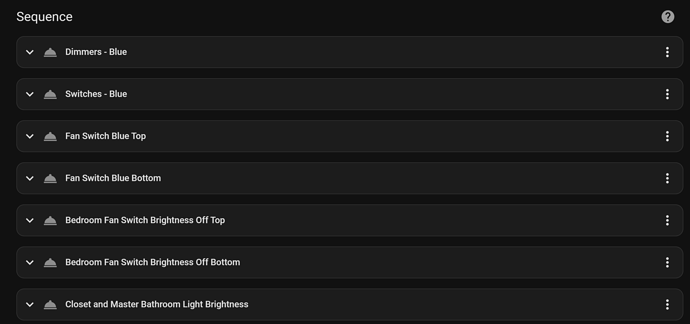I’ve had mine since July 12th, 2022 and they have not unpaired once. But they are Zigbee bulbs, and anybody without a strong Zigbee network may experience this with just about any device.
I can echo this frustration. I have switches, dimmers and lzw36’s. So I’ve got to set switches, dimmers, and the top and bottom led’s on the fan switch separate. I use a script in HA to run through the sequence.
My hope would be that the new 800 Series will use the same parameters as the 500 Series dimmers so they can all be set through a single multicast command.
